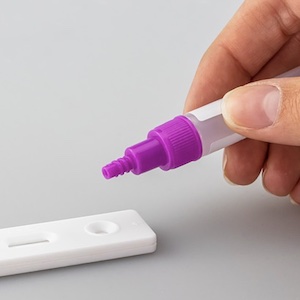Characteristics, comorbidities and laboratory measures associated with disease severity and poor prognosis in young and elderly patients with COVID-19 admitted to medical wards in Emilia-Romagna region, Italy: a multicentre retrospective study

All claims expressed in this article are solely those of the authors and do not necessarily represent those of their affiliated organizations, or those of the publisher, the editors and the reviewers. Any product that may be evaluated in this article or claim that may be made by its manufacturer is not guaranteed or endorsed by the publisher.
Authors
Background and Objectives. A relatively small number of studies have investigated the characteristics, comorbidities and laboratory measures associated with prognosis in patients with COVID-19, admitted to Internal Medicine Units (IMU) in Italy. Therefore, we performed a retrospective multicentre study to identify baseline features, predisposing to severe disease and poor outcomes, in adult individuals with SARS-CoV-2 infection, hospitalized in 5 IMUs in the Emilia-Romagna region (Italy). Materials and Methods. We included 129 consecutive patients (male 75, median age 68 years) from 1st March 2020 to 31st October 2021. Patients’ baseline characteristics, comorbidities, laboratory measures, and outcomes were collected. Results. At admission, the factors significantly associated with a higher risk of in-hospital mortality included: age (median 68 vs. 83 years in survived vs. dead patients, P=0.000), diabetes [Odds Ratio (OR) 4.00, P=0.016], chronic obstructive pulmonary disease (OR 4.60, P=0.022), cancer (OR 5.81, P=0.021), acute- (OR 9.88, P=0.000) and chronic-renal failure (OR 6.76, P=0.004). During the study period, 16 individuals died (12.4%), all over 70 years old. In deceased vs. non-deceased patients were detected: i) more elevated white blood cells and neutrophils-counts and lower lymphocytes count; ii) higher levels of total/direct bilirubin, creatinine, C-reactive-protein, lactate-dehydrogenase, ferritin, but only a slight Interleukin-6 increase; iii) a trend of lower vitamin D values. Conclusions. We proposed a new I index, a modified form of the Age-Adjusted Charlson Comorbidity Index, by considering pO2/FiO2 ratio, to better characterize the severity of COVID-19. Furthermore, we critically discuss our results with the current assumption which considers COVID-19 as a pathological condition associated with cytokine storm.
How to Cite

This work is licensed under a Creative Commons Attribution-NonCommercial 4.0 International License.
PAGEPress has chosen to apply the Creative Commons Attribution NonCommercial 4.0 International License (CC BY-NC 4.0) to all manuscripts to be published.






